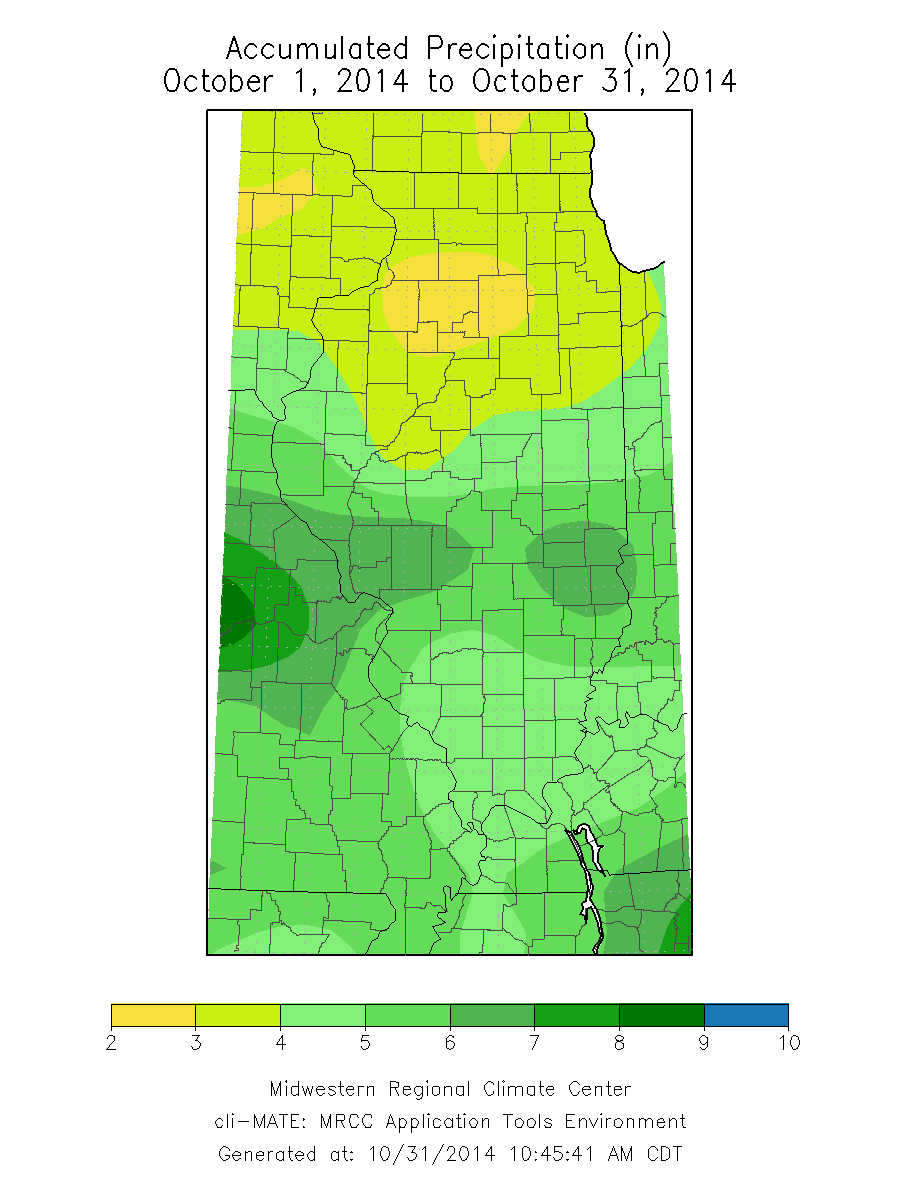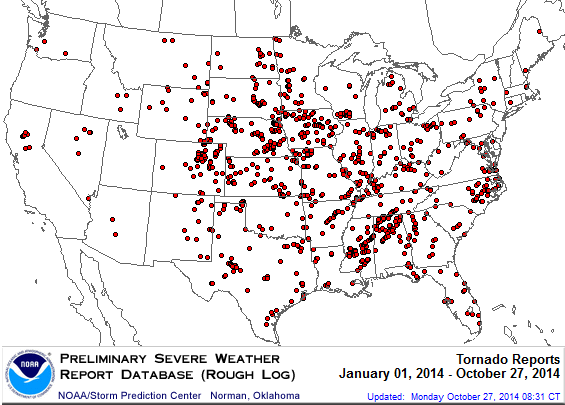Based on preliminary numbers*, the statewide average precipitation for October in Illinois was 4.5 inches, which is 1.2 inches above average. It was the 15th wettest October since 1895. The wettest October on record for the state was 1941 with 9.06 inches of precipitation.
The largest precipitation totals were in the central third of the state where 6 to 8 inches were common. Greenfield had an incredible 9.94 inches of precipitation. Medora, Girard, and Carlinville also reported over 9 inches of precipitation. Precipitation totals were more moderate elsewhere; 4 to 6 inches in southern Illinois and 2 to 4 inches in northern Illinois. Also, several locations in northeast Illinois reported seeing traces of snow for the month.
The statewide average temperature was 54.0 degrees, 0.1 degrees below average.
*I updated these numbers on November 2 with only a 0.2 degree change in temperature from 54.2 to 54.0 degrees.
MAPS AND PLOTS FOR OCTOBER
The plot of past October precipitation for Illinois (below) shows that things have become slightly wetter over time, about 0.64 inches in the last century. The outstanding October’s of 1941 and 2009 are easily seen as well.










